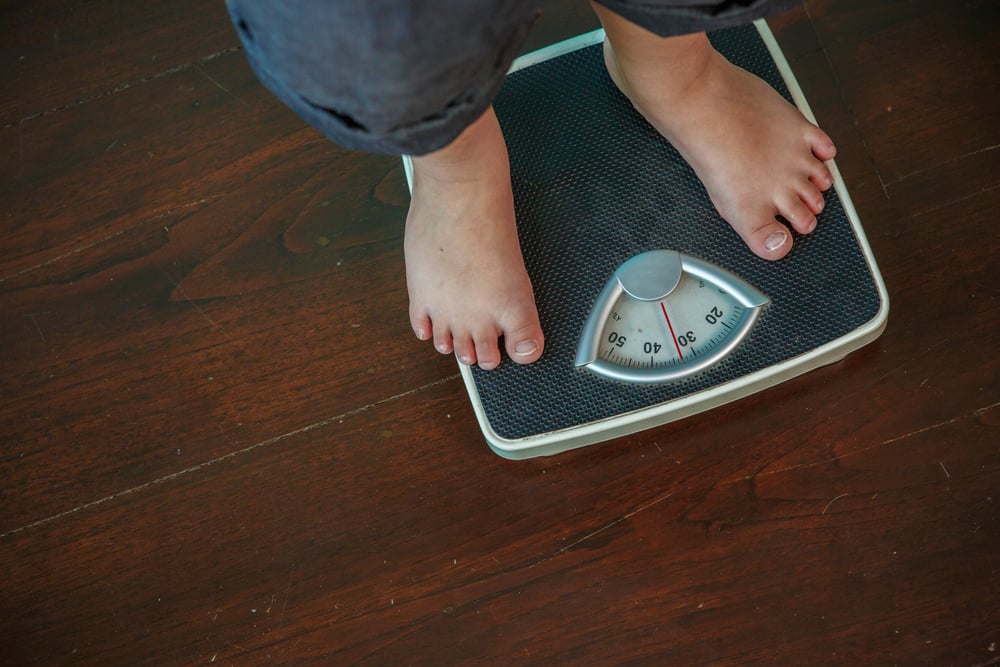Safe Diet Rules for Overweight Children
School children who are overweight or classified as obese need a diet menu to maintain their daily food intake. However, children should not just go on a diet. You as a parent need to provide a diet menu and apply proper eating rules so that school-age children’s efforts to lose weight do not feel excruciating. Find out the tips here, let’s!
Can children diet to lose weight?

Diet is literally defined as a dietary arrangement according to health conditions, for example a diet for heart disease, diabetes, and others.
So, diet doesn’t always lead to weight loss. Diets related to disease can be aimed at regulating diet and sorting out which foods can and cannot be eaten.
The diet in obese children is of course aimed at reducing children’s weight as well as helping to regulate their food intake.
Even though it aims to lose weight, the diet for children is different from the diet for adults.
Children, including those at the age of 6-9 years of development, are still in their infancy, so they really need various kinds of children’s nutrition.
If the child is on a diet that is required to limit his food intake, of course these nutrients cannot be fulfilled by the child.
As a result, diet can actually interfere with children’s growth and development.
So, diet for obesity in children can be done slowly by still paying attention to food intake to support children’s physical development.
On the other hand, the diet for children is not a short period of time and a large amount. The diet method to achieve the ideal weight and height of children is also not by limiting food intake.
School-age children still have to adopt a healthy diet with a proper diet and exercise regularly.
Diet menu options for school children

In order for the diet of obese schoolchildren to lose weight easier, you need to make a daily diet list.
The diet menu for school children still allows them to eat their favorite foods. It’s just that you need to sort out food sources and limit the calories that your little one eats.
Here are the diet menu options for school children who are obese:
1. Whole grain cereals and skim milk with fruit
A bowl of whole wheat cereal with the addition of liquid skim type children’s milk and a few pieces of fruit can be a great idea as a children’s breakfast menu.
Launching from the Mayo Clinic page, whole grain cereals have a high enough fiber content that helps children feel full.
If the child is full, of course, it will reduce their desire to eat snacks and heavy meals outside of their supposed meal hours. As a result, the child can lose weight and be more awake.
2. Chicken or beef stir fry with soy sauce
Children can still eat chicken and beef, really. Only, make sure you give the meat part that does not contain a lot of fat.
Take, for example, give schoolchildren’s diet in the form of chicken breast and lean beef.
Don’t worry that your child will lack fat intake because chicken and beef themselves actually contain fat.
In fact, chicken and beef are also rich in protein. You can process chicken and beef by stir-frying them and then adding them with sweet soy sauce.
Choice of protein and other healthy animal fats can be processed by making fish and eggs.
3. Spaghetti bolognese with vegetables
The diet menu for school children can then be made by making spaghetti bolognese.
You can serve the diet menu for school age children to lose weight during the main meal or as a distraction in the afternoon, of course, with different portions.
You can add vegetables such as broccoli and cauliflower to increase your child’s fiber and vitamin intake.
4. Tofu and vegetable soup
Tofu soup coupled with vegetables can be another diet option for school-age children who are trying to lose weight.
The choice of vegetables can be green onions, mustard greens, broccoli, carrots, cabbage, corn and others. You can also add sausage slices to soup.
Safe dietary rules for school children

Applying proper dietary rules is not only able to regulate children’s food sources, but also make children more accustomed to regulating food intake.
In this way, it is hoped that the child’s weight can decrease healthily and that the child’s health is maintained.
Apart from adjusting the food menu, try to apply the following diet rules for school-age children:
1. Provide a variety of food sources
Keep giving children a variety of healthy foods for children, such as:
- Vegetables and fruits
- Milk and dairy products such as cheese and yogurt
- Meat, fish, nuts, tofu, tempeh, and other high protein sources
- Sources of carbohydrates such as brown rice, wheat or whole grain foods (such as whole grain breads and cereals)
In addition to meeting the needs of carbohydrates, protein, and healthy fats, also meet the needs of vitamins, minerals, and fiber to avoid constipation.
Fresh fruit pieces can be used as a healthy snack for children in the afternoon.
2. Limit your intake of added sugar
Limiting school children’s added sugar intake in the diet menu by exchanging sugary drinks (such as juices and soft drinks) with water or low-fat milk.
Also reduce the amount of candy and sweet foods if your little one likes to eat these foods. In fact, there is nothing wrong with further limiting children to eat instant and fast food (fast food).
3. Breakfast every day
Make sure the child does not skip meals, especially breakfast.
A healthy breakfast with a source of carbohydrates and protein (such as a slice of whole wheat bread with peanut butter) can make children feel full.
This prevents the child from overeating the next time. In fact, according to the Help Guide, children who eat breakfast have a lower risk of obesity than children who don’t.
If lunch time your child is still at school, you should bring your child’s school supplies to eat during recess.
4. Pay attention to the child’s meal portions
It is not meant to prohibit, but you should remind the child when the portion of the meal is excessive. Try to provide a small plate to help limit the portion of the child to eat.
Conversely, a large plate can encourage children to eat more.
5. Do not eliminate sources of fat, but replace them with sources of healthy fats
School-age children who are on a diet still need fat in their daily diet.
However, instead of providing food sources of saturated fat such as fat in meat, high-fat milk, junk food, fried, and others should replace with unsaturated fats.
Examples of food sources of unsaturated fats that you can provide include avocados, olive oil, nuts, to fish.
6. Make sure the child is actively moving
In fact, children can easily burn calories with a variety of activities. Children usually like various activities and games.
This activity can indirectly make children active as well as sweat in a fun way.
Choose a variety of activities that your child likes, for example playing bicycles, soccer, basketball, dancing, and so on.
In addition, you can also invite children to exercise regularly, for example once a week. Get your child used to being active instead of just spending hours sitting in front of the TV and computer.
Hello Health Group does not provide medical advice, diagnosis or treatment.